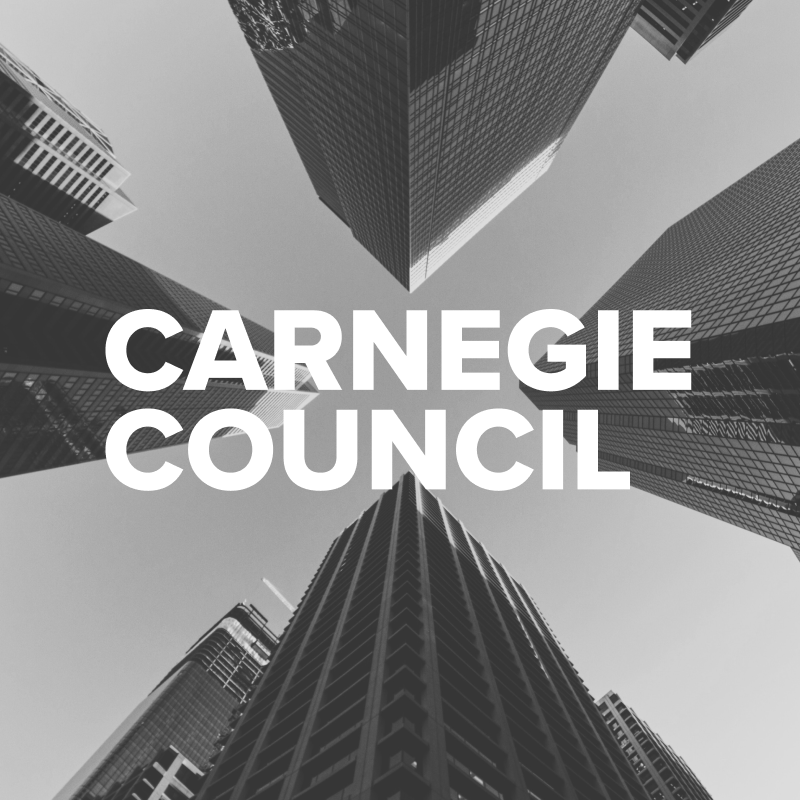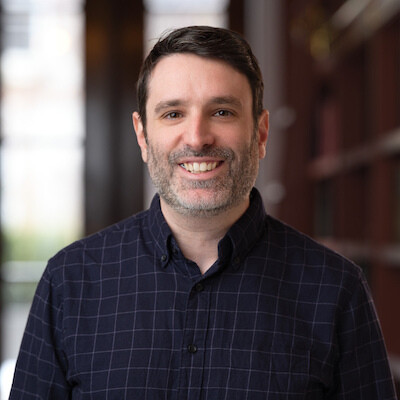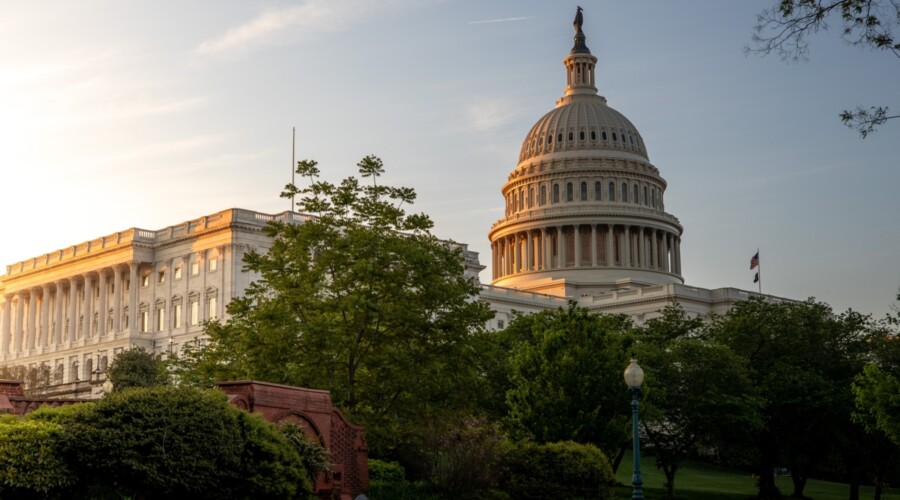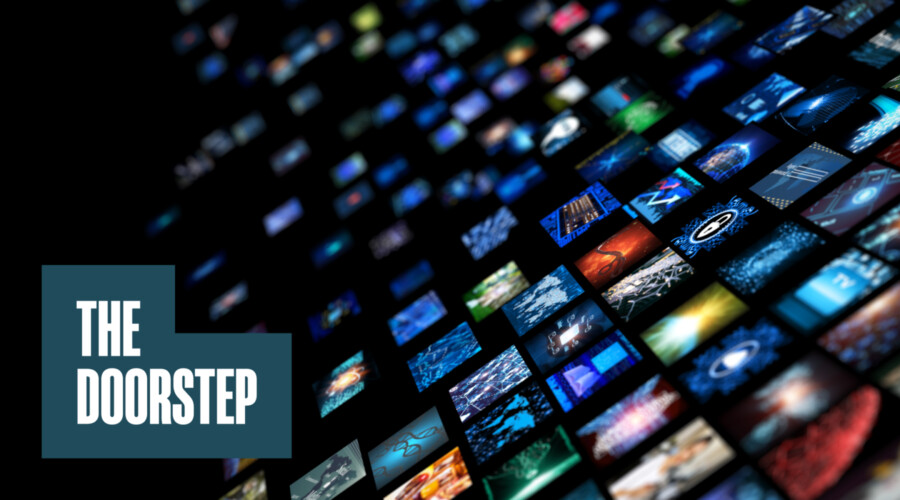在整个 2020 年夏天,种族正义抗议活动一直是当地、国内和国际媒体的头条新闻。但是,随着公众舆论在系统性种族主义和警察暴力等问题上的转变,媒体是如何做出反应的?全球如何看待这些抗议活动?明尼苏达大学教授 Danielle K. Kilgo 在 "透视抗议活动 "播客中回答了这些问题以及更多问题。
ALEX WOODSON: Welcome to this Protests in Perspective podcast. I'm Alex Woodson from Carnegie Council in New York City.
Through conversations with some of the leading voices on racial justice, human rights, and the history of social movements, this series will be looking at the wave of protests that followed the killing of George Floyd. This program is co-sponsored by Open Society University Network and Carnegie Council.
Today's podcast is with Dr. Danielle K. Kilgo. She is John & Elizabeth Bates Cowles Professor of Journalism, Diversity, and Equality in the Hubbard School of Journalism and Mass Communication at the University of Minnesota, Twin Cities.
Dani and I spoke about the media reaction to these protests and what’s changed as public opinion has shifted on systemic racism and police brutality. We touched on the role of local newspapers, the global media, and last week’s strike in the sports world, led by the National Basketball Association (NBA).
For more from Dani, you can go to daniellekilgo.com or follow her on twitter, @danikathleen. For more on Protests in Perspective, you can go to carnegiecouncil.org.
For now, calling in from Minnesota, here’s my talk with Dr. Danielle K. Kilgo.
Dani, thank you so much for talking today.
DANIELLE KILGO: It's a pleasure to speak with you, thanks.
ALEX WOODSON: This is part of our Protests in Perspective series, looking at the protests from different angles and from a global angle. We're going to talk about the media today. Before the webinars get started, I thought it would be good to speak with you about the media and their role covering the protests, just to set the stage for what we will be doing over the next few months.
To start off, obviously we're looking at what is happening in Wisconsin now. Earlier in the summer there were protests in Minnesota—where you are right now. I'm in New York; there have been protests here. What have you been seeing this summer as far as media coverage? I know this is something you have been following for several years. What are you seeing now as opposed to a few years ago? How have things changed?
DANIELLE KILGO: This moment is unique, and I think that is reflected in the media coverage. To build a foundation, in the past the media has worked in a way that maintained racial hierarchies; they produced coverage that was trivial or delegitimizing to protesters and to movements, especially those that centered on race-related issues. The coverage also minimized the substance behind the protests that happened. Protests are a very small part of what social movements do, and that part is minimized a lot of times in coverage or has been in the past.
That pattern is still reflected in the coverage I see today, but I also see a shift, which I think we should expect. The research we did before and the theories behind it show that as public opinion changes media coverage changes too. So I think that what we see in coverage now is a reflection of that shift. We have a major movement, we have corporate entities for the first time speaking out against racism and racial injustice, and I think that is reflected in the media coverage.
We also have an amount of coverage that we have never seen before. There is so much coverage. It is a unique time. While the patterns still emphasize the actions of protesters and these delegitimizing aspects, I do think we are seeing a little bit of the substance creep in over time.
ALEX WOODSON: Let's speak more specifically about that. As you said, public opinion has shifted. We have seen some polls about how public opinion has shifted over systemic racism and police brutality. Specifically, how are you seeing this public opinion shift reflected in the media coverage?
DANIELLE KILGO: I think there is more discussion about how people feel. I also think that because public opinion has shifted, people feel more comfortable about serving as sources and speaking out against a particular issue or saying their truth about a particular issue. When you know that 50 percent of the world is behind you it's much easier to talk about racism and the very nebulous definitions and conceptualizations that we have for it. It's a lot easier to talk about these things than it is when you feel marginalized or in the minority position.
I see that in the sources that journalists are using. I see that in official narratives, which are always amplified in coverage. I also see that through our elites. Now we see the NBA and other sports entities participating in this kind of protest, so I think the normalization at the elite level is probably the easiest way to see the shift, but also the citizen sources in local newspapers and in metropolitan newspapers seem to be able to articulate their antiracism policies or their stances against racism.
ALEX WOODSON: I'm a little hesitant to ask this question because we're speaking on Thursday, and this probably won't come out until Monday, and a lot can happen. I'm a huge NBA fan, and what happened last night was a monumental moment in sports history. This is something that you probably will need more time to think about, but what are your initial reactions to the NBA boycott, as well as the boycott by some Major League Baseball (MLB) and some Major League Soccer (MLS) and Women's National Basketball Association (WNBA) teams?
Maybe the way to think about for you is that you have all this media that covers basketball, baseball, and soccer that is gone. There is not much of a precedent for this in American history I don't think. What are your initial reactions to that, and how can that change the conversation?
DANIELLE KILGO: I was shocked too. I was surprised that so many entities would band together and create the sort of solidarity and action to participate in a—it's a strike. It's a strike against working.
I think it's pretty powerful, not because people are going to demand their sports back and then become anti-racist so that they can get basketball, but I think it's powerful in that we have these major corporate entities that are allowing for it in some ways, whether they're pressured or not, but allowing for their affiliates to take this stance.
I think as we go forward, especially in sports where black and brown bodies monopolize on a regular basis, I think it will bring awareness inside those spaces, and that will be very important. I think it will shift how we cover sports too. I think it will also help further—at least in corporate America, in private America, in the entertainment industry—a hyperawareness of police violence and the issues of racism in communities outside of where just those teams are.
ALEX WOODSON: I want to speak a little about local news. There have been so many local newspapers that have folded in the last few years, so many reporters have been laid off, and even many national outlets that have undergone huge changes and don't exist in the form that they did.
It occurred to me earlier in the summer that you had protests all over the country, and a lot of protests were happening in small towns and small cities that might not have a newspaper anymore. That is a problem, I think. How much of a problem is that, and how does that affect coverage, when you don't have local reporters on the ground covering these protests?
DANIELLE KILGO: My research shows the differences in coverage, especially for protests, is not that different from what national and metropolitan and local newspapers produce. Their patterns are very much the same in how they cover a particular protest or a particular area, and that is because the way protests are reported and the narratives that are created about them is not built in a complete bias. It is built into journalism norms and journalism routines. It is built into how we create episodic news stories.
So the differences in coverage are not that huge, but there is qualitatively a difference between seeing what a local journalist can produce when they know the community and they know the official sources and they know the space and what national or larger entities can report in a specific space. I think the real threat that we will see is that smaller protests or smaller issues in communities that do not have these media outlets and spaces will struggle to have their concerns conducted with a broader community. I think it can contribute to some of the segmentation that we have with issues that also contributes to polarization. So one of the big things is that things might get ignored and probably will and do, for sure.
I think the other thing is that having parachute journalism models is hard on communities, especially on small communities. Dropping in a bunch of national journalists to look at a protest in a small town or a town that doesn't have a media system could be damaging to the way that town exists and the economy that they have if their media was already struggling and they came in to talk about a controversial issue. Towns like Jasper, Texas struggled with rebuilding their economy because they also had major news organizations come in and talk about their town and talk about the different angles of it and then leave. I think the parachute models could be devastating for some of the communities that will get covered in the future.
ALEX WOODSON: How can we alleviate that problem if you don't have local journalists and national journalists coming in create these types of issues? Is there a solution? Is the idea just to build back local journalism in some way?
DANIELLE KILGO: Building back local journalism would be great. I'm not sure in our unique economic times how that could transpire. I do think in the short term one of the solutions is to try to figure out how to use collective communication efforts on platforms that remain available that people use on a regular basis like social media outlets and spaces like that, engaging citizens in communities that know that they need a media presence and don't have it and engaging in citizen journalism. Building value in the engagement with citizen journalism is an important way to at least sustain a space for communities to be able to connect with one another and to get some of the news.
ALEX WOODSON: Looking at this from a totally different perspective—as I said, the series is going to be looking at the protests from a global perspective. There have been Black Lives Matter protests all over the world.
I know it's impossible to generalize about the world reaction to these protests, but maybe you have a couple of examples of how you have seen international coverage of these protests compared to a few years ago.
DANIELLE KILGO: International coverage of the protests is riddled with shock and sensationalism I think, and it shows, and I think that is warranted. It is pretty shocking to see these events happen. It was shocking for the people in the United States; it would be shocking for anyone to see this happening on video over and over again.
But the coverage of protests that I see when I look at the international coverage is not to the dismay of the substance of protesters. They are going to focus on the shock and sensationalism and the riots, but the international media that I have been looking at really has been able to talk about and think about the story of racism in the United States. They are able to articulate it; they are able to connect it with the coverage and why George Floyd is different than any other person in the United States with its violence.
The BBC had a few articles—I guess I should say that international media doesn't always get it right. The BBC has gotten it wrong. One time they used a picture of the wrong George Floyd. Some of the outlets in Australia talked about this humanizing narrative of Derek Chauvin.
But there are also a lot of media outlets around the world that are alternative in nature and that are talking about issues and have paid attention to this space. A lot of alternative media, especially in Australia and Ghana, have taken this opportunity to highlight the parallels between what is happening in one country and what is happening in another, and I think that is commendable and something that we struggle with in the United States.
The Guardian has produced a lot of coverage that has paid attention to more thematic coverage that has affiliated some of the protests with bigger issues. Yesterday there was an article that was talking about the protests in Wisconsin, and the headline was: "Far from isolated incident." The coverage then goes back to connect those incidents in that community together. So there are a few examples of how this "outsider" country looking into a country to report on an issue is able to connect the other events in other spaces in a way that U.S. coverage struggles with. When the United States covers crises or protests in other countries, we also see an uptick in attention to the substance. There are a lot more legitimizing features in protest coverage of protests in other countries than there is in the United States covering U.S. protests.
ALEX WOODSON: That's interesting.
You mentioned alternative media in Australia and Ghana. What does that look like exactly? Are these organizations with people on the ground in the United States, or are they producing everything in their home countries?
DANIELLE KILGO: A few of the organizations that I talked to are producing news in their home countries. It is more than a news plug, though, they are really trying to figure out how they can put their unique systems of racism and colonialism and how they are situated in their space and try to figure out how to bring that conversation to make a political statement or even to further their movement by using this moment to say, "This is where we're going to go, and this is how we're going to get there."
I think that the coverage they produce is this eye-opening space where you can say: "This is how racism works in the United States, and it's built on slavery, and here is how racism works here, and our racism was built on a different history and a different foundation."
ALEX WOODSON: When something like the protest in Kenosha happened—and we saw a couple of nights ago the horrible shooting, and the morning after there was all this misinformation out there. As someone who is an expert in this and who studies this, where do you go for information to figure out what exactly happened a couple of nights ago in Kenosha? What would you recommend to someone who doesn't have the time and only has a couple of minutes to figure out what happened? What would you suggest?
DANIELLE KILGO: I would suggest not relying on one source. If anything, don't rely on one source because one source is going to get something wrong.
I tend to start with a local outlet if I can find it, and The New York Times, The Washington Post, these legacy newspapers are places where I go. Underrated in the online space are National Public Radio (NPR). They produce amazing coverage, and because they are not always oriented to the timeliness of the issue they take a little more time to produce their narratives, especially when they're talking about more thematic coverage. I like to follow up some things with NPR and radio broadcasts to get a more robust understanding of how things actually happened.
I think one of the most dangerous places to look at news and stop is live local news television, because they usually only have one journalist in the space. They usually are connected with the community and go to the people they know. It's chaos. They don't have a full team in a particular area, and the visuals behind it are something that people remember and that they capture and recall very well. I think with local news if you're consuming these images, it's important to follow up with a written narrative that consolidates the facts or the situation of the broader scenario that is going on.
ALEX WOODSON: Last question: What are you going to be working on in the coming weeks and months as these protests continue? Do you have a checklist that you go through when these protests start? Are you going to be shifting your focus? It must be a very busy and important time for you.
DANIELLE KILGO: I'm still trying to wrap my head around how much coverage has been produced about George Floyd and the protests in Minneapolis. There are so many various entities that were able to produce news about these protests, produce news that focused on police behavior, and produce news that focused on police violence, which we have never seen before. Those frames and those narratives didn't exist before.
A lot of my research is going to be invested in understanding how police violence is covered now that we have this hyperawareness of it and how we can rethink and reimagine journalism norms and routines with this idea that our officials are not "official," that their statements are not true sometimes, that we should not believe and should question even in breaking news what we are being fed by people we teach in journalism schools as our go-to people, our verified sources. I think that is where a lot of my work is going.
It's hard to consume this many videos over and over again on a regular basis. I do know that I may take a short shift to look a little bit also at some of the phenomenal coverage that has been done in the Courier-Journal, which covered the Breonna Taylor protests over the past few months. It has been amazing to follow their work, a narrative of press attention to an issue that doesn't show up a lot. We don't have a lot of coverage of protests against the killings or injuries of black women and police violence. A lot of my work will think about these emerging narratives that the press has introduced into our mainstream.
ALEX WOODSON: Just to follow up on that, you mentioned the Courier-Journal, which is a newspaper in Louisville. What has been special about their coverage that you have seen?
DANIELLE KILGO: I think the most special think about their coverage is they didn't quit covering it. They did not just stop when this happened. A lot of times we see this progression of coverage: There is a lot of coverage on the first day of protests, it continues, and then it fizzles out, even if the protests don't. You see this with the George Floyd protests; we will see this again in Wisconsin. Media attention goes onto something else.
With Breonna Taylor they have been very consistent about saying, "Here they are, another day in this space, peaceful protesters." They have also introduced this narrative of: "Here's what happens when the police intervene in these situations." They are very true to committing to the reality that protesters don't just turn violent. As I have looked at their coverage as a regular reader it has been different in that respect, and the fact that they're still paying attention to an issue that is unresolved that is related to a black woman.
ALEX WOODSON: Louisville is one of these small cities—I guess they're fortunate that the Courier-Journal is still there and still going strong, because that's not the case in a lot of cities. It's tough to think about what we might be thinking about the protests in Louisville if the Courier-Journal wasn't there.
DANIELLE KILGO: Absolutely.
ALEX WOODSON: Thank you so much, Dani. This has been great.
DANIELLE KILGO: Yes. Thanks for having me.
ALEX WOODSON: That was Dr. Danielle K. Kilgo, John & Elizabeth Bates Cowles Professor of Journalism, Diversity, and Equality in the Hubbard School of Journalism and Mass Communication at the University of Minnesota, Twin Cities.
I'm Alex Woodson.
Check out Carnegie council dot org for more on the Protests in Perspective series. You can sign up to participate in webinars through Zoom or you can watch live on YouTube. Our first webinar, "The Protests Go Global," is on Friday, September 11 at 12 noon with Emory Univeristy's Mary L. Dudziak and Univerity of Wisconsin's Brenda Gayle Plummer, moderated by Chatham House's Leslie Vinjamuri.
Thanks for listening. Stay safe and healthy.



